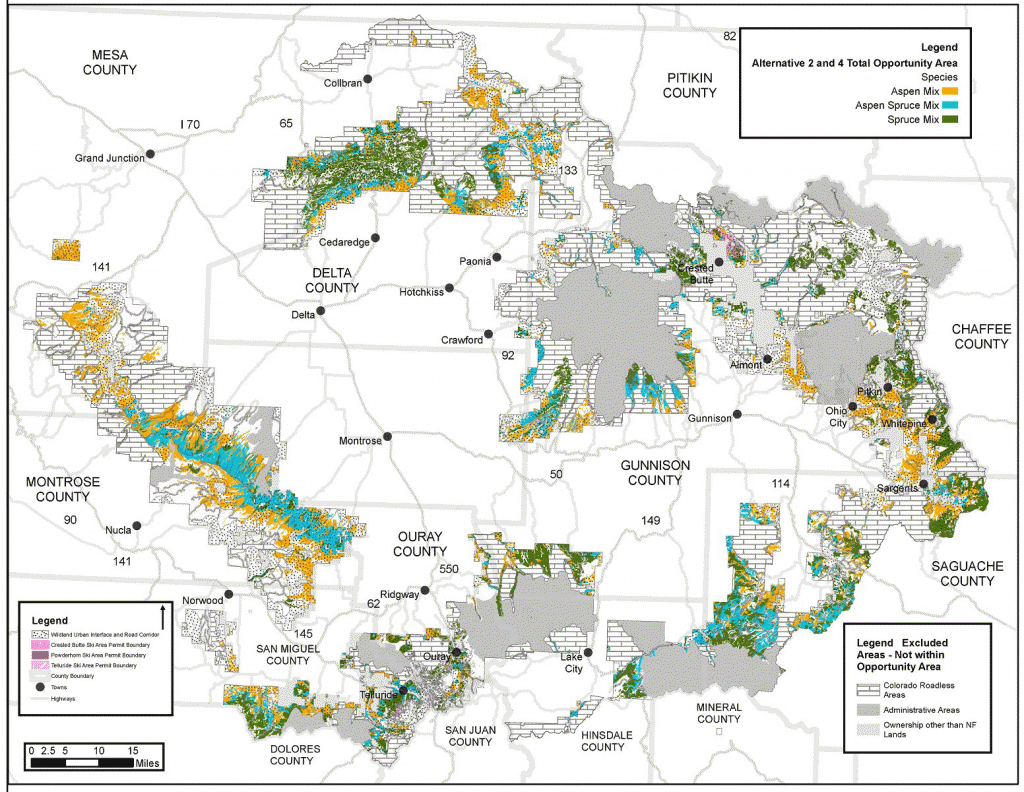Spruce beetle and aspen treatment plan released for final review
After two and a half years of negotiations, the Forest Service released its final proposal to treat over 100,000 acres of spruce and aspen forests across the Western Slope. The document is open for public review and objection until March 21.
This project, known as the Spruce Beetle Epidemic and Aspen Decline Management Response (SBEADMR), has been controversial to say the least, invoking outcry from all sides. WCC’s Public Lands Committee has worked from day one to make this a better project, attending hours of public meetings and reading hundreds of pages of technical documents. Specifically, we worked to shrink and focus the project to protect public safety and infrastructure, improve the science used in the analysis, and create a collaborative public process that will guide this project through its 10 year lifespan.

Map showing proposed treatment areas across the Grand Mesa, Uncompahgre and Gunisson National Forest from the Draft EIS.
All that hard work has payed off, and upon initial review, many of these goals have been reached. Although not perfect, the document is a significant improvement over what was initially proposed in 2013.
Here’s what’s in the final:
- The FS listened to our extensive feedback and developed a collaborative public process to inform individual projects, including public comment periods for each.
- The estimated number of new roads decreased from 320 miles to 178 miles, all to be removed within five years of completion of a project.
- Much more site specific detail is provided for potential “priority treatment areas” in six geographic parts of the forest.
- The project includes an extesnive list of “triggers” that can be used to stop and change projects if something goes awry.
- The adaptive management process will be guided and informed by an independent scientific team that will integrate its findings into the collaborative process.
- Unfortunately, the total proposed acreage has remained the same: 120,000 acres. 60,000 acres estimated for commercial treatments and 60,000 acres estimated for non-commercial treatments (such as prescribed burns).
We are still reviewing the final documents for details and will keep you updated on our findings. To read the documents and see the maps of proposed treatment areas, click here.
Although there are still concerning aspects to this project, we have faith in the collaborative process we helped create to resolve these issues as we go. WCC is helping pave the way for groundbreaking new forms of collaboration in our National Forests and we look forward to helping you stay involved.
If you want more specific information on how to be part of this project moving forward, let me know and we will get it to you! Contact Emily Hornback at [email protected].
